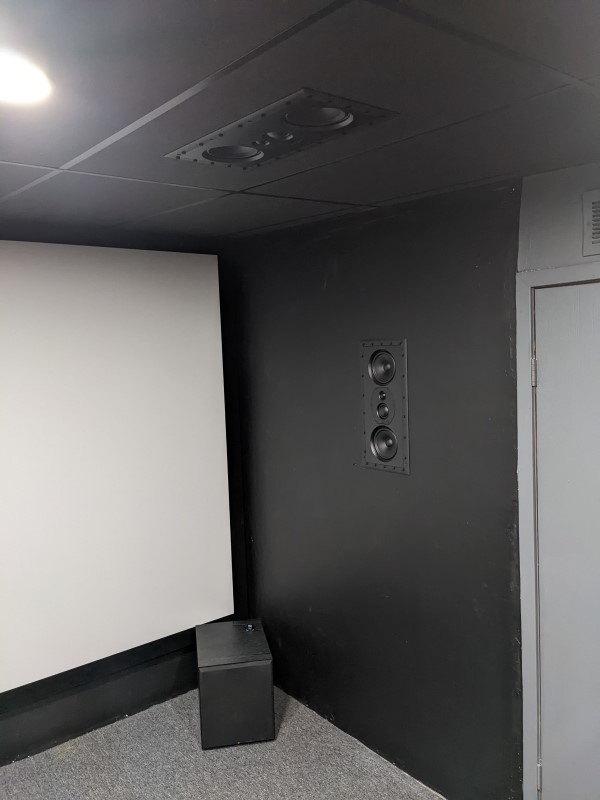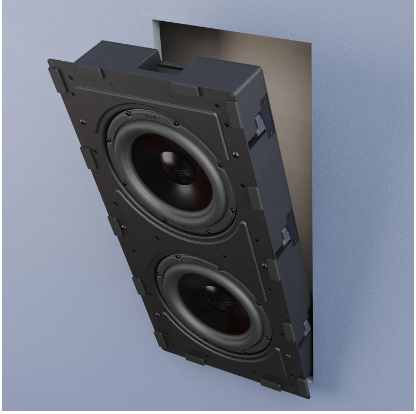How to Demo In-Wall Speakers Before Installation
You really want that “clean” look that will keep your partner happy while still providing you with the home theater experience that will make you never want to go to the movies again. That means in-wall speakers. You’re okay with that. You can either install them yourself or you’ll pay someone else. You have a concern. You’ve read that you should always test speakers in your home before you buy. How exactly can you do that? Demoing in-wall speakers before you install them seems impossible and you certainly don’t want to have to rip them out after if you don’t like them! What can you do? Let’s discuss!
The Problem
“Just hook them up and see how they sound,” say the unwashed masses.
Yeah, that’s not going to work. See, in-wall speakers are meant (and let us clear our throats so that we can say this loud enough) to be used in a wall. The front of the speaker is designed to sound best when it is attached to a large, flat surface. The back is designed to be enclosed in the wall cavity (usually, unless it includes a backer box). If you simply hook up an in-wall speaker to your AV receiver and demo something, not only will you not get a similar sound to how it will sound installed, it very well could sound much, much worse.

The Unlikely Solution
Most if not all in-wall speakers are designed to be installed into an existing wall. This means that you cut a hole and the speaker has some sort of solution for sticking the speaker into that hole and securing it to the drywall. Here is the least likely solution for demoing in-wall speakers before you install them.
Most people want to demo speakers because they have more than one option they are considering. If you are lucky, both of the speakers you are considering will fit in the same size opening and you can just install them one at a time and test them out.
If that sounds unlikely, remember the title of this section.
Some people attempt to force this issue by only considering speakers that have an option that will work in the same size opening. If they already have a speaker in mind, finding another that fits in the same opening, is around the same price point, and hits every other metric is…again…unlikely. But, hey, you could get lucky.
Build a Dummy Wall
If you are planning on installing your in-wall speakers yourself, you could build a dummy wall with which to demo your speakers. It wouldn’t have to be an actual wall, but a large, flat surface that could be used to install multiple speakers. If the speakers aren’t enclosed, you’d need to also build a back to this thing that would mimic how much air and space would be included in the wall behind the speaker. Since the wall wouldn’t be permanent, you could install multiple speakers side-by-side in order to quickly test them.
Honestly, that sounds like a lot of work to us.
Plan Ahead
Much like the “unlikely” solution above, you can plan ahead. Many lines of in-wall speakers have speakers of different sizes. If you plan on installing some of the larger versions, you can, instead, demo some smaller ones first. For example, in the Monoprice in-wall speakers come in all shapes and sizes. If you’ve decided on larger front speakers, you could install some smaller ones first to test out. If you have multiple candidates, you would order them from smallest to largest so that you are constantly expanding the hole. When you find a speaker that sounds good in your space, you stop.

For example, say you were interested in some Monoprice THX in-wall speakers as well as some from Aperion Audio. Find the line of speakers you are interested in and order the smallest from each. Install them both (or one at a time, whichever makes the most sense) into the area where your main speakers will eventually live. Choose the one that sounds the best in your room. You can assume that the rest of the speakers in the line will sound similar. You can then use the small speakers for surround or Atmos duties.
Trust the Measurements
If this all sounds way too involved to you…we agree! While we think it is important to demo speakers in your home theater, most of the time the problem isn’t the speakers! It’s the room. If you are going for a clean home theater install, then you need to understand and commit to doing everything to make your home theater awesome. That’s not just installing expensive in-wall speakers and a big screen, but also adding room treatments, thinking about FOV, making sure your speakers are installed in the correct locations, and so much more.
If you are going to do everything it takes for a great home theater, then you can really just look at the measurements to know that a speaker will be right for your application. With acoustical treatments, careful placement, application of room correction, and correct speaker choice, you’ll have a phenomenal-sounding home theater. No demo is required.


